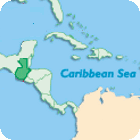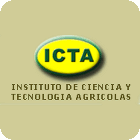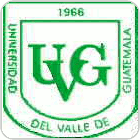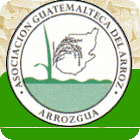Plant breeding programs in Guatemala
 Although located in tropical Central America, Guatemala does not have a solidly tropical climate. In fact, there are areas with a tropical climate but large regions are very mountainous. Therefore climate depends much more on altitude than on latitude. The agricultural sector is a crucial component of Guatemala’s economy representing around 25% of the GDP and employing 50% of the labour force. The main crops are coffee, sugarcane, bananas and cotton, but also palm tree, celery, cauliflower and asparagus for a shorter period.
Although located in tropical Central America, Guatemala does not have a solidly tropical climate. In fact, there are areas with a tropical climate but large regions are very mountainous. Therefore climate depends much more on altitude than on latitude. The agricultural sector is a crucial component of Guatemala’s economy representing around 25% of the GDP and employing 50% of the labour force. The main crops are coffee, sugarcane, bananas and cotton, but also palm tree, celery, cauliflower and asparagus for a shorter period.
Six institutions (2 public, 3 private and 1 NGO) are working on plant breeding and related biotechnology capacity in Guatemala. As in other Central America countries, the plant breeding activities in economic crops are performed mainly in private companies which are mainly working in crops like sugar cane, rice, tomato, corn and chili pepper. Public institutions have developed some plant breeding programs on the most important crops for the Guatemalan population such as maize, bean, tomato and potato with the economic support from the Guatemala government, but this economic support is very low, at around US $ 1,000,000 per year.
Plant breeding activities in Guatemala consist mainly of developing and evaluating lines. Efforts are focused on improving yield and disease resistance. In the case of medicinal plants, selection is for the production of secondary metabolites.
The most limiting aspect for the success of the crop breeding programs are lack of financial resources to carry out field and laboratory experiments and inadequate availability of laboratory infrastructure to carry out experiments using advanced plant breeding techniques. Nevertheless there have recently been some efforts, through the Central American Bank for Economic Integration, to improve the facilities such as buildings and laboratories of biotechnology and the application of molecular markers in plant breeding process.
Research and education institutes with activities in plant breeding
Public Institutes
 |
Institute of Sciences and Technology of Agriculture (ICTA)
|
 |
Faculty of Agronomy at University of San Carlos of Guatemala
|
Private Institutes
 |
Universidad del Valle de Guatemala
|
 |
Sugar Cane Investigation Centre - Centro de Investigación de la caña de azucar (CENGICAÑA)
|
 |
Genetica Tropical Gentropic S.A.
|
Non Governmental Organizations (NGO)
 |
Guatemala Rice Grower’s Association - Asociación de Arroceros de Guatemala(ARROZGUA)
|
______________________________________
Information by Luis Rodolfo Montes Osorio (2009) - Information based on the Guatemala's full report from the PBBC survey. Last revised 31-07-2009, GIPB
